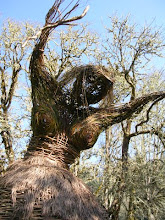When I was in school (long, long ago) we were sometimes
assigned a scrapbook project. I can remember doing one on Venezuela that
included an essay on Simon Bolivar, agriculture, industry, history, maps, etc.
with any illustrations I could find. (Wretched old textbooks and National
Geographics from the thrift shops often helped with such projects.) Another was
on Abraham Lincoln (I can still feel the coarseness of the construction paper –
brown – that comprised the pages of that album. It was old paper, and had a
distinctive dusty odor, too.)
Many young friends kept scrapbooks of movie stars,
horses, cats, animals in general, the Dionne Quintuplets, Shirley Temple,
flowers, and other subjects. Boys tended toward subjects such as aviation,
radio, sports, heroes (Charles Lindberg, boxing champs) cars, comic strips, and
other “manly” matters. I think my first unprompted
effort was on science, but then, I was always a weird child.
Adults collected recipes, albums of family travels with
photos and souvenir ephemera, records of military service or occupations. Mothers
kept scrapbooks on their children’s progress through childhood. College
students kept a record of the years in school, with photos, programs for plays
and dances and sporting events; clippings, grades, class schedules, lectures,
and other souvenirs. I once acquired a pre-WWI album compiled by a student at a
vocational college in our state who was studying pharmacy. After much research
and a visit to the pharmacy school archivist, we determined that the album
maker was in the first graduating class of the pharmacy school and became the
first instructor under the dean. A lot more was discovered about his career,
including the fact that I had no doubt dealt with him numerous times in a local
pharmacy years earlier. Since the school was celebrating its centenary, the
album found a home in its archives.
 |
| From a scrapbook kept by a WW II Merchant Marine |
Today’s “scrapbook craze” is nothing new – just, in many
ways, better – with more archival materials, efforts to render pages artistically,
stickers and borders and rubber stamps and other enhancements easily obtained.
Curious about the history of scrapbooks and their place
in recording our history, and especially about the regard in which they might
be held by institutional archives, I have just read three books about the
subject. Each focuses on a different aspect of the scrapbook, but all present a
fairly consistent history of the scrapbook. Salient points include:
During the Renaissance, when paper and printing became
more readily available, wealthy patrons of the arts kept albums of prints,
portraits, and other refined material.
In the late 1700s, James Granger published a history of
England that include blank pages for adding illustrations, letters, documents,
or other related material. It became a fad in the 1800s to add such ephemera to
other printed books, a process that is now described as “extra-illustrating” or
“Grangerizing.”
“Commonplace Books” had more serious intent as a form of
record-keeping in the 17th to 19th centuries. These were
journals in which people could copy out quotations or documents that they
wanted to preserve, philosophical or political ponderings, newspaper or
magazine clippings, etc. Thomas Jefferson, Abraham Lincoln, and other
significant figures employed these regularly. (Remember that there was no
Internet, no copy machines, no other way to preserve some of this material.)
Commonplace books were much like journals or diaries, with no particular
segregation of subject or chronological order. They were referred to often as a
source of subjects for speeches, debate, history, etc.
 |
| More from the Merchant Marine's scrapbook |
The Victorians perfected the art of the parlor album,
books in which they could keep memorabilia, in which guests could add passages
or poems or drawings or even musical scores or recipes.
When newspaper printing became inexpensive and papers and
magazines were more readily available to the public, an early form of “scrapbook
craze” swept the country. Whole families sat down together to clip and paste
into their individual scrapbooks.
The paste was a messy proposition, being homemade and
hard to use. No less a figure than Mark Twain offered a solution: scrapbooks
with pre-pasted strips to moisten. This “Mark Twain’s Scrapbook” appeared in
many formats and editions, and it has been said that it was his best-selling
book. Of course, he also used scrapbooks to keep track of his many appearances
in periodical print (stories, poems, essays, articles, illustrations, etc. were
widely traded between several thousand publications). And of course there were
announcements and reviews of his lectures and other activities. Clipping
bureaus sprang up to provide material to celebrities, organizations, and others
who wanted a record of any and all publications.
 |
| Page from the album of a high-school girl active in music. |





1 comment:
As claimed by Stanford Medical, It's indeed the one and ONLY reason this country's women get to live 10 years more and weigh an average of 19 kilos lighter than us.
(And really, it is not about genetics or some hard exercise and EVERYTHING related to "HOW" they are eating.)
P.S, What I said is "HOW", and not "WHAT"...
Tap this link to see if this little quiz can help you unlock your real weight loss potential
Post a Comment